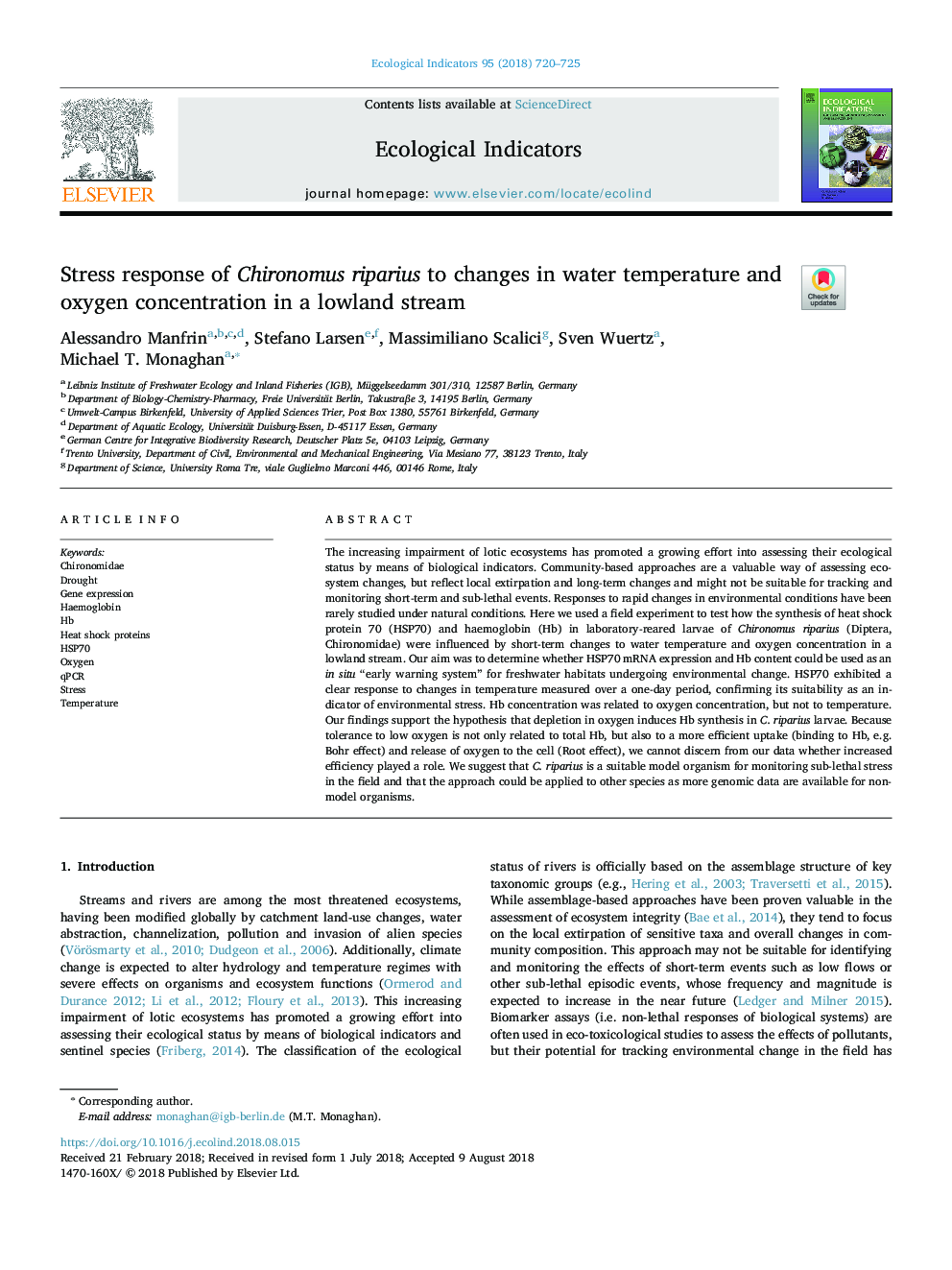| Article ID | Journal | Published Year | Pages | File Type |
|---|---|---|---|---|
| 8845031 | Ecological Indicators | 2018 | 6 Pages |
Abstract
The increasing impairment of lotic ecosystems has promoted a growing effort into assessing their ecological status by means of biological indicators. Community-based approaches are a valuable way of assessing ecosystem changes, but reflect local extirpation and long-term changes and might not be suitable for tracking and monitoring short-term and sub-lethal events. Responses to rapid changes in environmental conditions have been rarely studied under natural conditions. Here we used a field experiment to test how the synthesis of heat shock protein 70 (HSP70) and haemoglobin (Hb) in laboratory-reared larvae of Chironomus riparius (Diptera, Chironomidae) were influenced by short-term changes to water temperature and oxygen concentration in a lowland stream. Our aim was to determine whether HSP70 mRNA expression and Hb content could be used as an in situ “early warning system” for freshwater habitats undergoing environmental change. HSP70 exhibited a clear response to changes in temperature measured over a one-day period, confirming its suitability as an indicator of environmental stress. Hb concentration was related to oxygen concentration, but not to temperature. Our findings support the hypothesis that depletion in oxygen induces Hb synthesis in C. riparius larvae. Because tolerance to low oxygen is not only related to total Hb, but also to a more efficient uptake (binding to Hb, e.g. Bohr effect) and release of oxygen to the cell (Root effect), we cannot discern from our data whether increased efficiency played a role. We suggest that C. riparius is a suitable model organism for monitoring sub-lethal stress in the field and that the approach could be applied to other species as more genomic data are available for non-model organisms.
Keywords
Related Topics
Life Sciences
Agricultural and Biological Sciences
Ecology, Evolution, Behavior and Systematics
Authors
Alessandro Manfrin, Stefano Larsen, Massimiliano Scalici, Sven Wuertz, Michael T. Monaghan,
